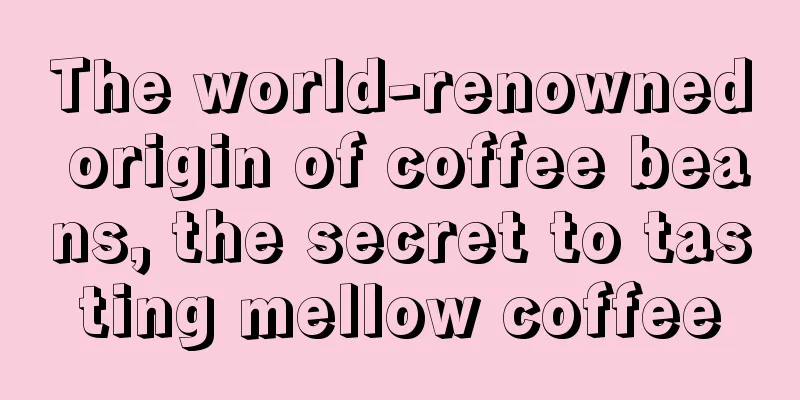Classic latte art: the ingenuity you can’t see

|
Order a latte and you will most likely see this rippling heart. Or this graceful leaf. Romantic, elegant, and lifelike. The softness of latte is just around the corner. But do you know that these two patterns were drawn by a diligent and technical geek? His original intention was not to make the coffee more aesthetically pleasing, but to make it taste better. There was an engineer from Boeing named David Schomer. He discovered the beauty of coffee in Seattle and devoted himself to the craft of coffee with the professionalism of an engineer. He opened a coffee shop, and what he loved to study most was not how much money he made in a day, but to improve his technology and conduct various experiments to make the coffee more delicious. He was particularly passionate about improving the technique of espresso preparation. To what extent is the obsession? Let me give you some examples. Grinding the coffee beans into powder is the first step in making espresso. Through repeated experiments, he came up with a precise definition of which grinding wheel to choose and what speed to use. In order to make the oil layer of Italian coffee "just right", he repeatedly studied and determined the following details:1. How much pressure should be used to flatten the coffee powder in the powder basket? 2. How to ensure consistent water temperature for coffee extraction? 3. How to complete the extraction within the 25-second time window. This may sound trivial, but according to Hume, if this is not done, the fat layer will either be "burned" or have an unpleasant sour taste. Speaking of the latte art patterns, although they are pleasing to the eye, they actually require a lot of technical skills. He experimented with pouring milk into espresso, finding angles and forming swirls, trying to draw patterns on the surface of the coffee. In 1989, he finally "drew" a satisfactory heart-shaped pattern, which became the signature logo of his store. Later, he successfully experimented with another classic latte art pattern, the leaf shape. Until now, these two patterns are classic graphics for latte art. Making latte art on coffee is actually a scientific research process: 1. Make sure the oil layer of the espresso is in place, otherwise the surface tension of the coffee will not be enough and the flower will not be pulled out; 2. The milk is quickly heated and whipped, and the fat and sugar in it are broken down, thus adding sweetness and aroma to the coffee, making the taste of the coffee more delicate and layered. 3. The milk foam should be made very fine with little air, otherwise it will reduce the taste of the latte. Later, he wrote his experience into a book: "Espresso Coffee: Professional Techniques". This book is hailed as the "industry bible of espresso" .He is even respected by his peers as "the best coffee engineer of our time." You wouldn’t believe it, but the “heart” on a cup of latte takes so much thought. When you sip slowly, do you feel the care put into it? Three cups of coffee, three realms of life: Coffee from Ethiopia, the hometown of coffee Cold brew coffee is popular now. As the weather is getting hotter, try making a cold brew coffee to cool down and refresh yourself. Many reasons to like hand-brewed coffee |
<<: What are the pros and cons of drinking N cups of coffee every day?
>>: Not all lattes are coffee. Be careful when you order a latte at a beverage store.
Recommend
Unlock the sweet secret of pure coffee, how to make delicious coffee with bitterness and sweetness
Abstract: This article introduces how to make del...
Does drinking coffee before exercise stimulate your potential or just invite trouble?
Whether it is appropriate to drink coffee before ...
Coffee Machine Rental Network-Provides professional and convenient coffee machine rental services
Coffee Machine Rental Network: Convenient Coffee ...
How to grind coffee beans more finely
How the fineness of ground beans determines the k...
Coffee Bean Classification Revealed: Exploring Different Types of Coffee Beans and Their Characteristics
Coffee Bean Classification Revealed: Exploring Di...
The shocking truth revealed by coffee data, you absolutely cannot miss it!
The surprising truth revealed by coffee data Coff...
Make instant coffee 10 times more delicious, add ice to coffee and keep the original flavor. It's so simple
After get off work, I had a cup of coffee and went...
A wide variety of coffee varieties and flavors
The diversity of coffee varieties Coffee is a ver...
Coffee series products: taste the rich aroma and enjoy the charm of coffee!
Coffee series products: taste the rich aroma and ...
How to tell the quality of coffee beans?
The quality of coffee beans directly affects the ...
A cup of coffee a day helps teenagers improve their concentration and learning efficiency, a new trend in healthy beverage choices
A cup of coffee a day helps teenagers improve the...
The world's top ten coffee bean producing regions
The world's top ten coffee bean producing reg...
Which brand of coffee bean grinding machine has the best aroma?
There are many brands of coffee bean grinders, an...
Coffee, the double-edged sword of life
Coffee is a double-edged sword in life. With its ...
Dark Roast vs. Medium Roast: Which Is Better for You?
Dark Roast vs. Medium Roast: Which Is Better for ...









